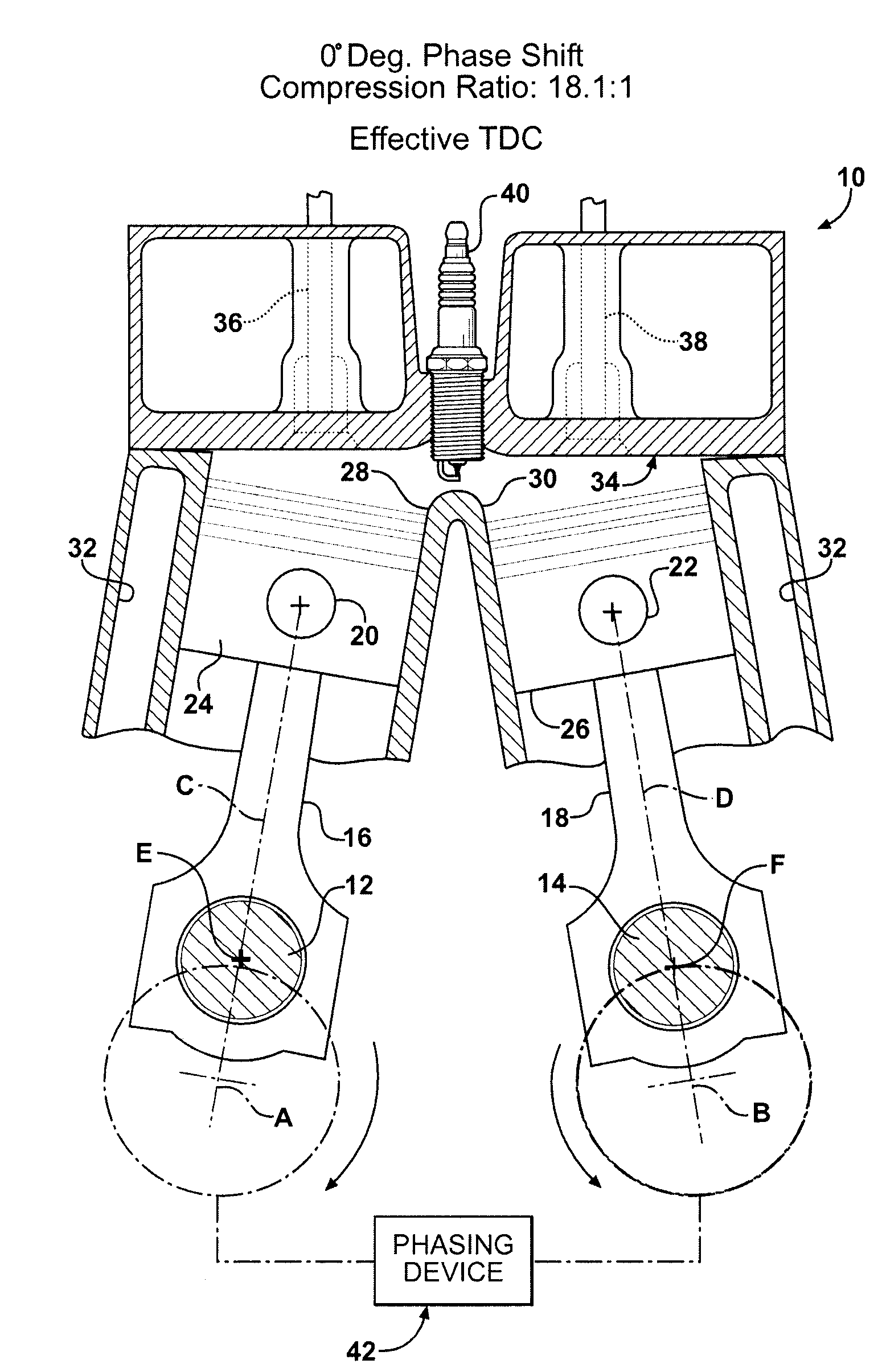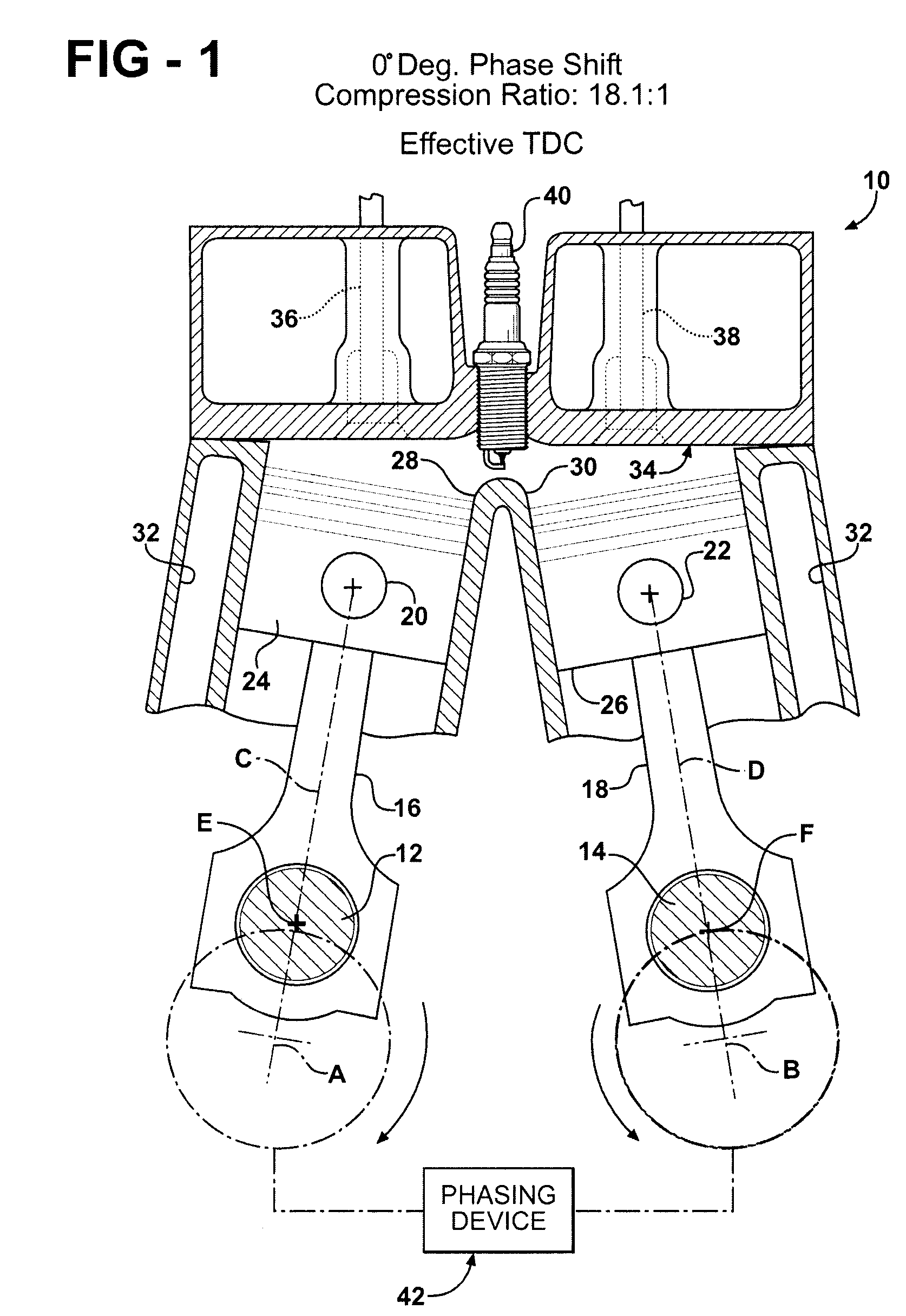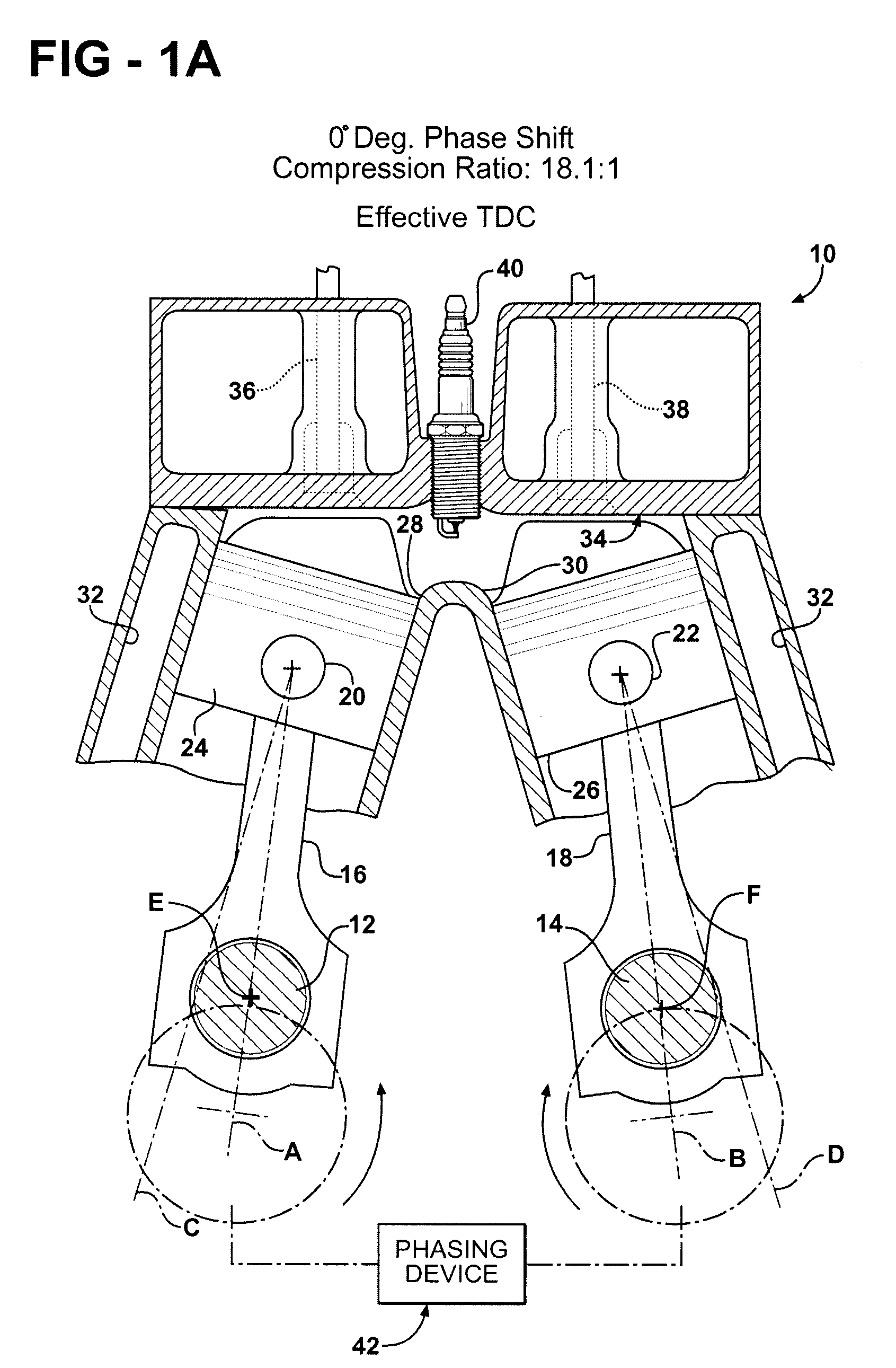Variable compression ratio dual crankshaft engine
a compression ratio and crankshaft technology, applied in the direction of positive displacement engines, hot gas positive displacement engine plants, combustion engines, etc., can solve the problems of mechanical damage to the engine, increase the amount of combustion heat transferred to the engine, and reduce the efficiency of the engin
- Summary
- Abstract
- Description
- Claims
- Application Information
AI Technical Summary
Benefits of technology
Problems solved by technology
Method used
Image
Examples
Embodiment Construction
[0029]Referring to the Figures, wherein like numerals indicate like or corresponding parts throughout the several views, a schematic representation of an engine according to one exemplary embodiment of this invention is generally shown at 10 in FIG. 1. The engine 10 is of the dual crankshaft-type, wherein two crankshafts 12, 14 are supported for rotation about respective parallel axes A, B. The crankshafts 12, 14 may be of the typical type, supported in main bearings (not shown) in an engine crankcase assembly. A connecting rod 16, 18 is pivotally connected at a lower end thereof to each crankshaft 12, 14, respectively. This pivoting connection can be accomplished with standard techniques. An upper end of each connecting rod 16, 18 carries a pin 20, 22, respectively, for articulated connection to a piston 24, 26, respectively. The one piston 24 is disposed for reciprocating movement in a first cylinder 28, whereas the other piston 26 is similarly disposed for reciprocating movement ...
PUM
 Login to View More
Login to View More Abstract
Description
Claims
Application Information
 Login to View More
Login to View More - R&D
- Intellectual Property
- Life Sciences
- Materials
- Tech Scout
- Unparalleled Data Quality
- Higher Quality Content
- 60% Fewer Hallucinations
Browse by: Latest US Patents, China's latest patents, Technical Efficacy Thesaurus, Application Domain, Technology Topic, Popular Technical Reports.
© 2025 PatSnap. All rights reserved.Legal|Privacy policy|Modern Slavery Act Transparency Statement|Sitemap|About US| Contact US: help@patsnap.com



